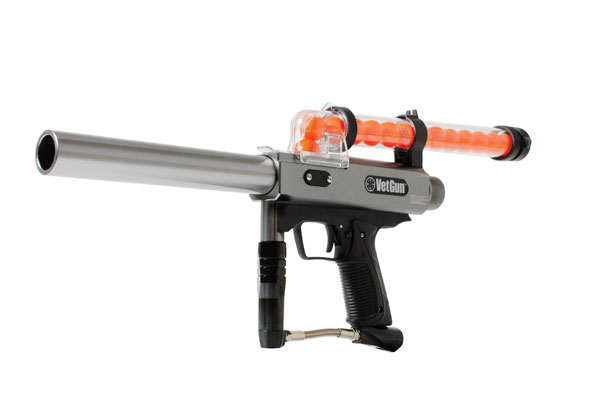“Horn flies are small [three-sixteenths of an inch long] and dark gray,” says Dr. Lee Townsend, extension entomologist, University of Kentucky College of Agriculture. “They feed on cattle and occasionally horses, taking 20 or more blood meals each day with their stiff needle-like mouthparts. Calf weaning weights are reduced by about 15 pounds if an average of 200 or more horn flies is on animals during the summer. The same type of impact is seen on yearling cattle. In addition, horn flies can spread summer mastitis, which affects the mammary glands of non-lactating cows, and they have been implicated in the spread of anaplasmosis.”
“Face flies are one of the most difficult pests to control,” Townsend explains. “Face flies are on cattle only for short periods of time during the day and stay mostly on the head, which is difficult to treat with insecticides. They use an abrasive, sponging mouthpart to stimulate tear flow from the eyes and then lap up the protein-rich secretions. These flies also feed on nasal discharges, saliva and blood oozing from wounds. In addition to being very annoying to cattle, face flies play a role in the transmission of Moraxella bovis, the principal causal agent of bovine pinkeye.”

“Lice are small, flat-bodied insects with legs modified for grasping hairs,” says Townsend. “They cannot survive off of the animal for more than a few days. Sucking lice, with their narrow, pointed heads, are blood feeders. Biting lice feed by scraping material from the skin and base of the hairs. Infestations of biting and sucking lice have been associated with reduced weight gains and general unthriftiness of cattle, but the economic impact has been very difficult to assess. Many veterinarians and producers believe that losses occur, and some cattlemen treat animals for lice just for the improved appearance.”
“All four pests can be controlled with the VetGun,” says Randall Tosh, executive vice president of SmartVet Holdings Inc., developer and manufacturer of VetGun systems. “The VetGun delivery system uses CO2 power to project an AiM-L VetCap to a range of about 30 feet for treatment of an animal.”
VetCaps encapsulate liquid parasiticides in a soft gel capsule that bursts on the cow, releasing its contents. The active ingredient in AiM-L is lambda cyhalothrin, a synthetic pyrethroid. It also contains a synergist known as piperonyl butoxide. Lambda cyhalothrin is lipophilic, meaning it bonds with oil on the animal’s skin, which aids in product migration on the animal to provide effective control of external parasites.
In addition to VetCaps, lambda cyhalothrin is also found in ear tags and pour-on insecticides. Uses other than livestock include food and non-food crops; applications indoors and outdoors for homes, hospitals and other buildings; and greenhouse, ornamental plants and lawns. ![]()
User testimonials:
“I apply insecticide ear tags to my cattle in March and pull them in July when they are no longer effective as evidenced by large numbers of horn flies on their backs,” says Danny Roller of Rock Island, Tennessee. “When I see flies, I grab my VetGun and go to shooting. About six minutes after I hit a cow with a VetCap, you can’t find a fly on her with a search warrant.”
“The VetGun and VetCaps are effective, convenient and fun to use,” says Doug Croley, who ranches near Havana, Florida. “I feel that the VetGun system is another good tool in the arsenal for fighting horn flies. I use the VetGun in the summer after the ear tags become ineffective. The VetCaps control horn flies for about five to six weeks.”
“I have found the VetGun system to be very effective for horn fly control,” says Jim Riddle, Opelika, Alabama. “Cattle jump when they are hit with a GelCap, but they immediately settle down. GelCap applications cause less animal stress than penning cattle and working them in the heat of summer.
“An example of the minimal stress effects from impacts of GelCap on cattle is related by my ranch hand. When he started down the lane last summer to treat the cattle, my big bull saw him and starting running toward the gate. The bull turned broadside to the gate, waiting for the GelCap to hit him. Evidently the bull prefers to be hit with a GelCap rather than being pestered by horn flies.”
PHOTOS
PHOTO 1: This producer is using a VetGun to treat his cattle.
PHOTO 2: The VetGun. Photos provided by AgriLabs.







